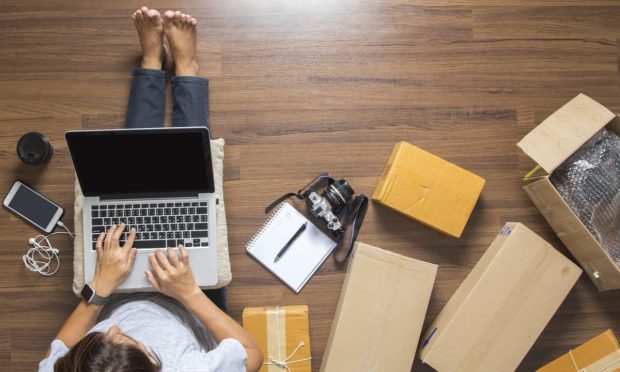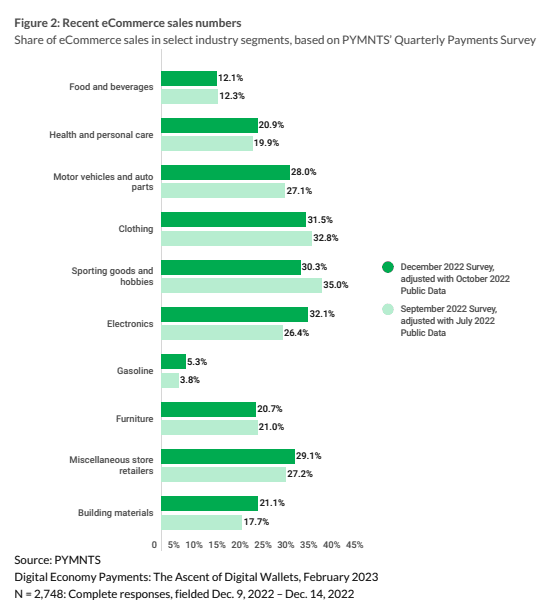Nearly a Third of Consumer Electronics Are Bought Online

We’re going online, more often, to buy the electronic gadgets that keep us online.
As noted in our most report on digital commerce, “The Ascent of Digital Wallets,” consumers’
“share” of eCommerce sales across segments saw some of the biggest gains in electronics: 32.1% electronics sales were done online in the fourth quarter vs. 26.4% in the third quarter.
They bought building materials in a more material way online, too, at a December reading of 21.1% of the time, versus 17.7% just three months earlier. All those houses and apartments bought and rented during the pandemic need their upkeep, of course. Working from home — or entertaining houseguests once again after so long — does much to spur the desire to spruce up the home office or the living room (furniture has held about a 21% eCommerce share between quarters).
Digital Wallets and BNPL Gain Ground

The overall eCommerce slice of the retail pie is staggering, as measured in total retail spend, and yet still has room to run. eCommerce represented 25% of non-grocery spend, which equates to $1.1 trillion. The data finds that, in terms of keeping food on the table, consumers purchased 12% of all retail spending on groceries through online channels in 2022.
Even the ways in which we pay — the choices we make when it comes to checkout in the aisles or with that online shopping cart — are changing. At least a bit.
Digital wallets are gaining some ground, specifically in online transactions. Our report found that PayPal represents 13.5% of consumers’ total online retail spend. Apple Pay reached 4.3% of the total amount spent on online purchases, and Google Pay took a 2.5% share.
BNPL also holds a larger share of online retail purchases than in-store transactions, at 2.8% compared to a respective 0.4%, per the latest readings — which indicates that no matter what the purchase is for when shopping online, we’re becoming more attuned to spreading the payments out over time.
In the 12 months before December 2022, high-income consumers also paid with nontraditional payment methods more often, with PayPal making up 8.5% of all their retail purchases, Apple Pay 3.5% and Google Pay 2.1%. BNPL is showing up as a payment choice among middle-income consumers, who paid for 1.5% of all their retail purchases using that installment option.
